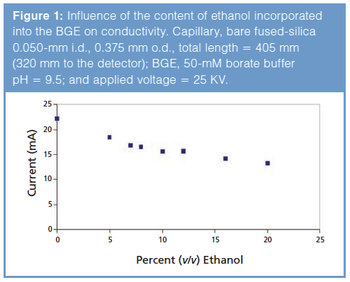Articles by Isabella Nicoletti

Analytical separation techniques based on the differential migration velocities of analytes under the action of an electric field are gaining increasing acceptance for the analysis of phenolic compounds in edible and medicinal plants and in plant-derived food products. In Part 2 of this review article the authors discuss the fundamental principles and practical aspects of electromigration techniques, including capillary zone electrophoresis (CZE), micellar electrokinetic chromatography (MEKC), and capillary electrochromatography (CEC). The development of two-dimensional systems, performed by coupling either liquid chromatography (LC) with an electromigration technique or two electromigration techniques, operated under different separation mechanisms, is also discussed.

Column-based liquid phase separation techniques, such as liquid chromatography (LC) in reversed phase separation mode and capillary electromigration techniques, using continuous electrolyte systems, are widely used for the identification and quantification of phenolic compounds in plants and food matrices of plant origin. This paper is the first of a two-part review article discussing fundamental and practical aspects of both LC and capillary electromigration techniques used for the analysis of phenolic compounds occurring in plant-derived food and in edible and medicinal plants. The chemical structure and distribution of the major phenolic compounds occurring in the plant kingdom, as well as the main methods used for their extraction and sample preparation, are also discussed. Part 1 will focus on liquid chromatography.

Column-based liquid phase separation techniques, such as liquid chromatography (LC) in reversed phase separation mode and capillary electromigration techniques, using continuous electrolyte systems, are widely used for the identification and quantification of phenolic compounds in plants and food matrices of plant origin. This paper is the first of a two-part review article discussing fundamental and practical aspects of both LC and capillary electromigration techniques used for the analysis of phenolic compounds occurring in plant-derived food and in edible and medicinal plants. The chemical structure and distribution of the major phenolic compounds occurring in the plant kingdom, as well as the main methods used for their extraction and sample preparation, are also discussed. Part 1 will focus on liquid chromatography.




